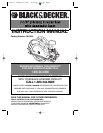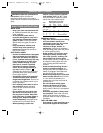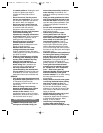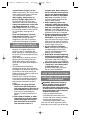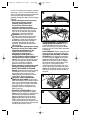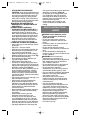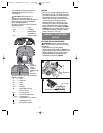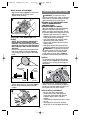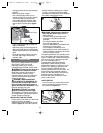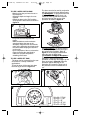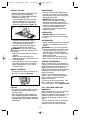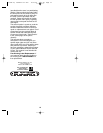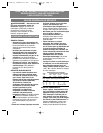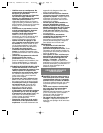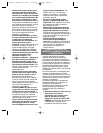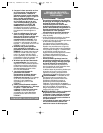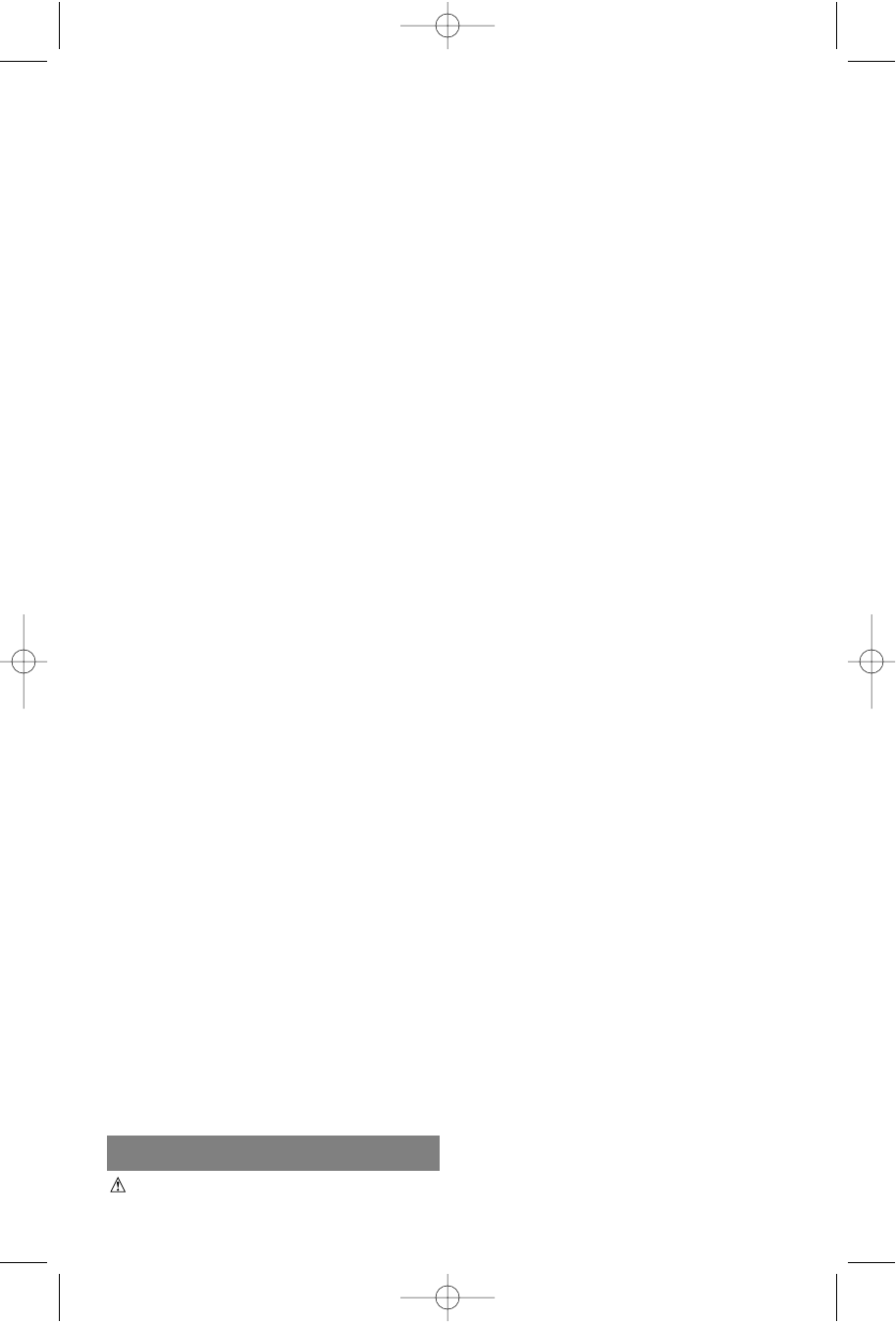
3
to a stable platform. Holding the work
by hand or against your body is
unstable and may lead to loss of
control.
• Do not force tool. Use the correct
tool for your application. The correct
tool will do the job better and safer at
the rate for which it is designed.
• Do not use tool if switch does not
turn it on or off. Any tool that cannot
be controlled with the switch is
dangerous and must be repaired.
• Disconnect the plug from the power
source before making any
adjustments, changing accessories,
or storing the tool. Such preventative
safety measures reduce the risk of
starting the tool accidentally.
• Store idle tools out of reach of
children and other untrained
persons. Tools are dangerous in the
hands of untrained users.
• Maintain tools with care. Keep
cutting tools sharp and clean.
Properly maintained tools, with sharp
cutting edges are less likely to bind and
are easier to control.
• Check for misalignment or binding
of moving parts, breakage of parts,
and any other condition that may
affect the tools operation. If
damaged, have the tool serviced
before using. Many accidents are
caused by poorly maintained tools.
• Use only accessories that are
recommended by the manufacturer
for your model. Accessories that may
be suitable for one tool, may become
hazardous when used on another tool.
SERVICE
• Tool service must be performed only
by qualified repair personnel. Service
or maintenance performed by
unqualified personnel could result in a
risk of injury.
• When servicing a tool, use only
identical replacement parts. Follow
instructions in the Maintenance
section of this manual. Use of
unauthorized parts or failure to follow
Maintenance Instructions may create a
risk of electric shock or injury.
SPECIFIC SAFETY RULES
DANGER! Keep hands away from
cutting area and blade. Keep your
second hand on auxiliary handle, or
motor housing. If both hands are
holding the saw, they cannot be cut by
the blade.
• Keep your body positioned to either
side of the saw blade, but not in line
with the saw blade. KICKBACK could
case the saw to jump backwards. (See
“Causes and Operator Prevention of
Kickback.”)
• Do not reach underneath the work.
The guard can not protect you from the
blade below the work.
• Check lower guard for proper
closing before each use. Do not
operate saw if lower guard does not
move freely and close instantly.
Never clamp or tie the lower guard
into the open position. If saw is
accidentally dropped, the lower guard
may be bent. Raise the lower guard
with the Retracting Handle and make
sure it moves freely and does not touch
the blade or any other part, at all angles
and depth of cut.
• Check the operation and condition of
the lower guard spring. If the guard
and the spring are not operating
properly, they must be serviced
before use. Lower guard may operate
sluggishly due to damaged parts,
gummy deposits, or a buildup of debris.
• Lower guard should be retracted
manually only for special cuts such
as “Pocket Cuts” and “Compound
Cuts.” Raise lower guard by
Retracting Handle. As soon as blade
enters the material, lower guard
must be released. For all other sawing,
the lower guard should operate
automatically.
• Always observe that the lower guard
is covering the blade before placing
saw down on bench or floor. An
unprotected, coasting blade will cause
the saw to walk backwards, cutting
whatever is in its path. Be aware of the
time it takes for the blade to stop after
switch is released.
• NEVER hold piece being cut in your
hands or across your leg. It is
important to support the work properly
to minimize body exposure, blade
binding, or loss of control.
• Hold tool by insulated gripping
surfaces when performing an
operation where the cutting tool may
631798-01, CS1000L Cir Saw 12/16/05 1:14 PM Page 3



